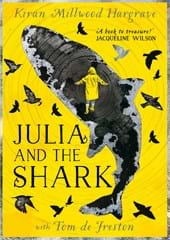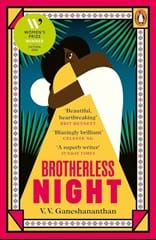There’s a well-established link between reading widely and doing well at school. Less well known is that the correlation between reading engagement and levels of attainment does not pertain to all forms of reading. Specifically, it applies to students who read fiction (1).
Fiction, it seems, acts on our cognitive processes in ways unavailable when reading other forms of writing. In researching the science of the reading brain, literacy expert Maryanne Wolf labelled this phenomenon ‘the fiction effect’ (2).
Fiction calls for a ‘deep reading’ (as opposed to the surface reading encouraged by many digital texts) (3). The requirements of deep reading (reflection, inference, critical thinking, attention, imaginative projection, empathy, etc.) are sufficiently demanding that, over time, they reshape the brain’s neural pathways, restructuring the brain in ways that increase our capacity to analyse, reason and understand. Hence the correlation between reading fiction and increased levels of academic attainment.
Wolf’s research – and the large-scale studies and surveys that back it up – have profound implications for how we approach reading and teaching fiction in schools. These include:
Developing interest and engagement in reading fiction
It’s reading fiction per se that improves attainment levels, not necessarily reading specific books, for example ones with high levels of cultural capital attached to them. In classrooms, this means selecting texts that students will enjoy and teaching them in ways that encourage active engagement. It also means not putting students off reading with uninspiring, unsuitable texts. Encouraging students to read beyond the classroom is of key importance and can be helped by making available novels and short stories that are going to work for them.
Classroom approaches that develop cognitive processes
If aspects of deep reading like reflection, inference, critical thinking, attention, imaginative projection and empathy develop cognitive functions, then they need to be prioritised in teaching approaches. It’s not so much teaching the processes explicitly as designing tasks that encourage their use and development. For example, requiring students to keep journals during their reading of a novel is a brilliant way to develop their reflective capabilities, particularly if they share their journaling with others and have the chance to develop their reflections further in conversation. Leading researchers into reading are concerned about the how comprehension is currently taught. Several have banded together to create the Reading Comprehension Advocacy Network (RCAN).
A focus on personal response
Wolf’s work stresses that reading a novel is not an isolated process but brings into play all of the reader’s prior knowledge, be that of reading or of the world in general. To benefit from ‘the fiction effect’, then, students need opportunities to relate their reading to their own experiences, both of the world and of texts, and their developing linguistic and literary understanding. They also need the chance to express their own thoughts and feelings about their reading, no matter what they might be.
Sticking to the task at hand
Sometimes teaching novels to develop ‘the fiction effect’ means resisting some of its tangential benefits. Vocabulary instruction, for example. It’s true that reading helps to develop vocabulary, but this pertains to non-fiction as much as fiction, if not more so. The reason for reading novels, for children as for adults, is not to learn new vocabulary. We don’t set out on a new Zadie Smith or Richard Powers novel thinking, ‘Oh, a great chance ahead to improve my vocabulary!’. Interrupting reading so that students can focus on particular words is likely to disrupt the pleasures and thinking involved in reading.
EMC is paying lots of attention to reading this term. Here are some aspects of our work designed to help teachers develop the fiction effect in their students.
What We Teach When We Teach Novels at KS3
A webinar running on May 8th exploring how best to develop the fiction effect in your classrooms.
Encouraging Wide Reading for Pleasure
Full day face-to-face course that looks at developing reading for pleasure inside and outside the classroom.
English and Inclusion – an EMC Teacher Conference with CPD
Full day face-to-face event with a strong focus on reading for pleasure as an aspect of inclusion. Keynote by Teresa Cremin, a member of RCAN.
EMC Teaching a Novel – New Publications
We’ve recently added two new publications to our Teaching a Novel series. In addition to existing downloads for Where the World Ends and The Bone Sparrow, you can now find resources for Jessie Burton’s Medusa and Patrick Ness’s A Monster Calls. We’ve also published light-touch resources for students shadowing the 2025 Carnegie Writing Award.
Tutor-time reading project
This term, four of our associate teacher schools are trialling an approach to tutor-time reading using an EMC anthology. Given the limited time available in tutor-time, we’ve found that teachers using novels often don’t get through the whole book, with students struggling to remember what happened at the start when having to read over a period of several months. We want to see what happens when students read a selection of short stories instead.
References
1. Jerrim, J. and Moss, G., 2019. The link between fiction and teenagers’ reading skills: International evidence from the OECD PISA study. British Educational Research Journal, 45(1), pp.181-200.
2. Wolf, M., 2007. Proust and the squid: The story and science of the reading brain. Icon Books.
3. Wolf, M., 2018. Skim reading is the new normal. The effect on society is profound. The Guardian.









